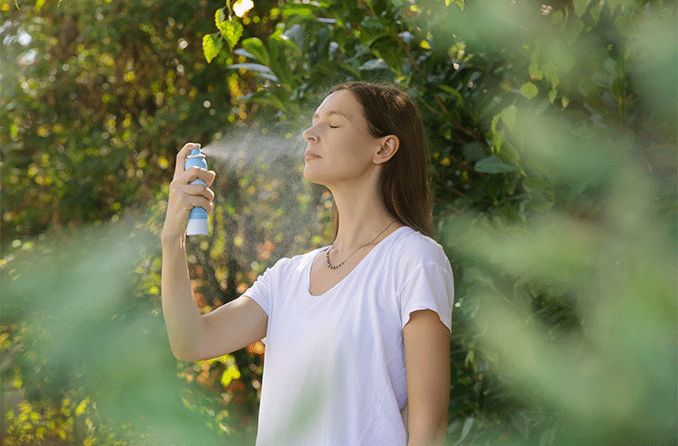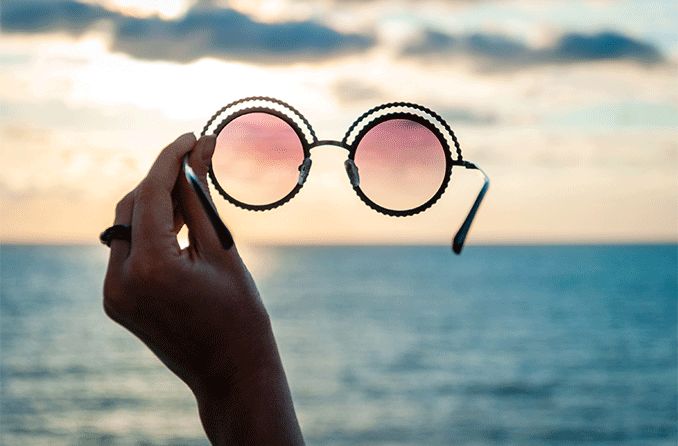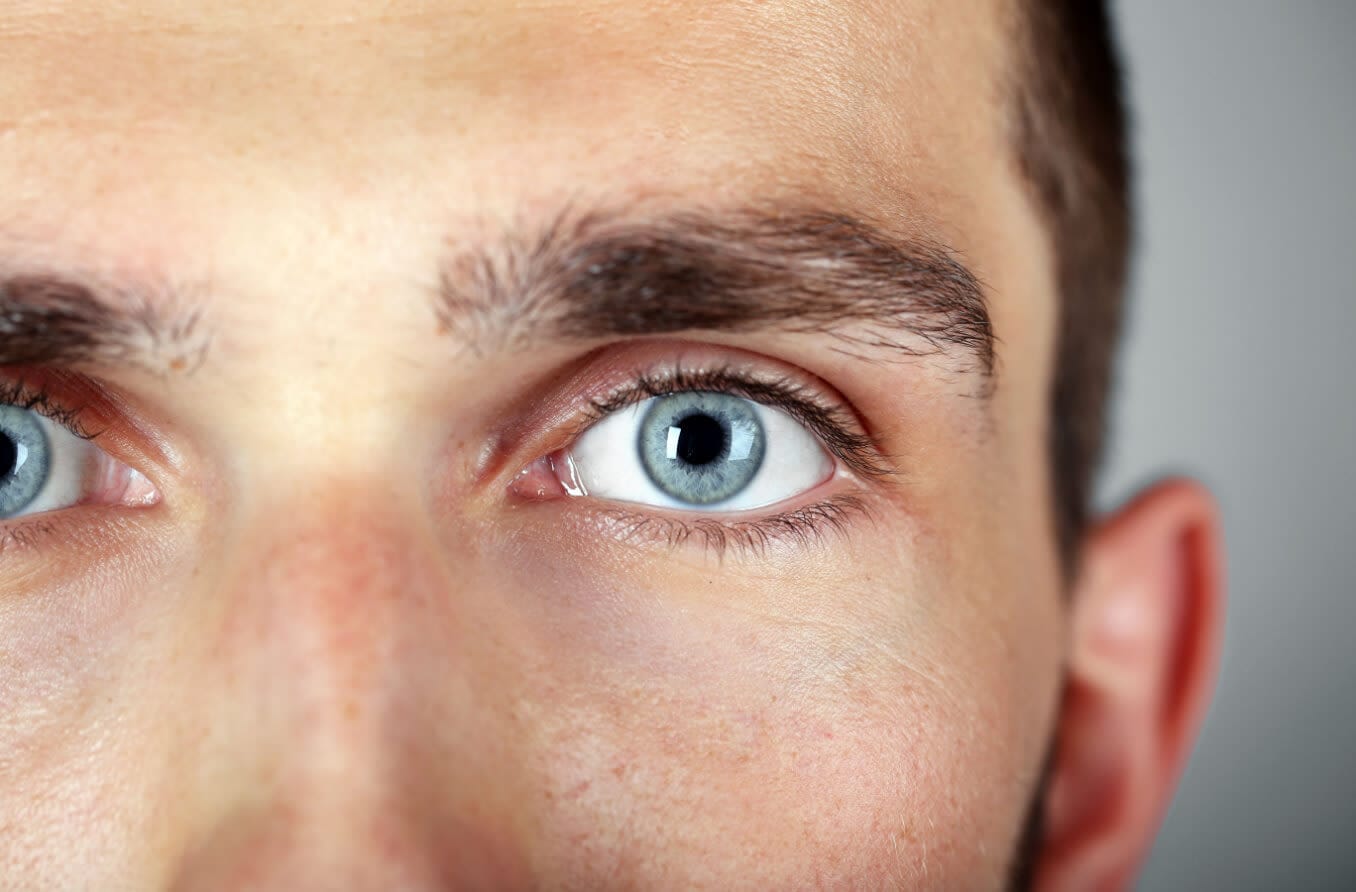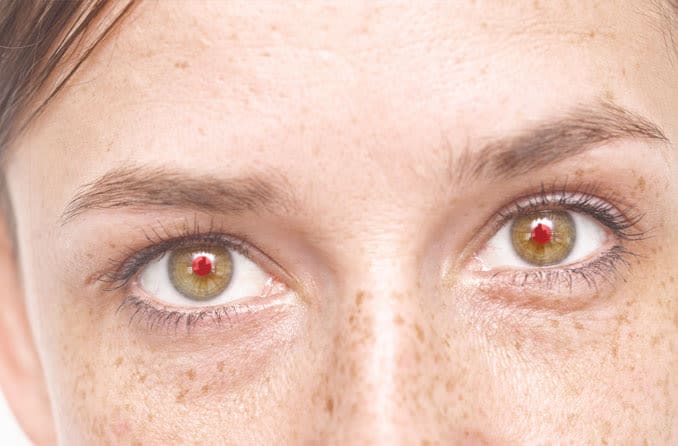1. Blue Lizard Sensitive Face Mineral Sunscreen SPF 30+
This mineral sunscreen is made specifically for use on the face. It’s oil-free and lightweight, making it easy to apply and comfortable to wear. It’s a physical sunscreen with two active ingredients: titanium dioxide (1%) and zinc oxide (7.8%). It also contains green tea extract and hyaluronic acid, inactive ingredients the company states are included to nourish the skin.
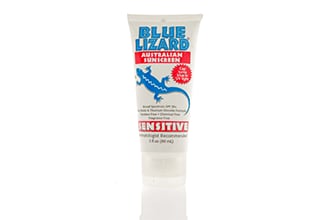
Blue Lizard Sensitive Face Mineral Sunscreen is:
A cream formula that comes in a squeeze tube
Formulated so it won’t clog pores
Free of chemical sunscreen ingredients, parabens and fragrances
Customers who reviewed the product state that it does not irritate the skin or burn the eyes. However, one customer mentioned they didn’t like the smell.
2. Coola Mineral Sun Silk Crème Organic Face Sunscreen SPF 30
This oil-free mineral sunscreen provides broad-spectrum UVA/UVB protection using just one active ingredient: zinc oxide (15%). The vegan sunscreen also contains a range of certified-organic inactive ingredients to soothe the skin, including aloe leaf juice and cocoa seed extract.
Coola Mineral Sun Silk Crème Organic Face Sunscreen is:
A fragrance-free cream formula that comes in a pump bottle
Lightweight and designed to layer under makeup
Made with certified-organic ingredients
Customers who reviewed the product state that it goes on smooth and does not leave a white, blue or purple cast on the face like some mineral sunscreens.
3. EltaMD UV Physical Broad-Spectrum SPF 41
This oil-free, unscented mineral sunscreen has a slightly higher SPF than the first few on the list. It’s also water-resistant to lessen the chances that it will wear off quickly if you’re sweating or swimming. This sunscreen is made with two active ingredients — zinc oxide (9%) and titanium dioxide (7%) — and a variety of antioxidants, including linoleic acid, thioctic acid and quercetin.
EltaMD UV Physical Broad-Spectrum sunscreen is:
A cream formula that comes in a squeeze tube
Lightly tinted so it won’t leave a whitish layer on the skin
Water-resistant for up to 40 minutes
Most customers who reviewed this sunscreen say it’s lightweight and blendable, but some mention it has an "orange" look and they wish it came in more tints to suit a variety of skin shades.
4. La Roche-Posay Anthelios Mineral Zinc Oxide Sunscreen SPF 50
This high-SPF sunscreen is similar in texture and feel to the brand’s popular lightweight chemical sunscreen, but this product is formulated with 100% minerals to block the sun. The active ingredients are titanium dioxide (6%) and zinc oxide (5%). Inactive ingredients include vitamin E and silica, which absorbs oil and gives the product a silky texture.
La Roche-Posay Anthelios Mineral Zinc Oxide Sunscreen is:
A silky liquid formula that comes in a small, portable bottle
Allergy-tested and made for sensitive skin
Water-resistant for 40 minutes
Customers who reviewed the product state that it’s lightweight, has a matte look and does not burn the eyes like chemical sunscreens. However, a few users complained that it left a white tint on their skin.
5. Neutrogena Sheer Zinc Dry-Touch Sunscreen Broad Spectrum SPF 50
This high-SPF sunscreen may be a good choice for a day at the beach or a workout since it’s sweat- and water-resistant for over an hour. The oil-free sunscreen has one active ingredient: zinc oxide (21.6%).
Neutrogena Sheer Zinc Dry-Touch Sunscreen Broad Spectrum is:
A cream formula that comes in a squeeze bottle
Non-comedogenic, meaning it won’t clog pores
Sweat- and water-resistant for 80 minutes
Customers who reviewed the product said that it’s great for workouts like biking, is not oily and does not irritate the eyes. However, others said its thicker, paste-like texture made application a challenge.
6. Thinkbaby Safe Sunscreen SPF 50
This mineral sunscreen is designed for babies but is also popular with adults who have sensitive skin or are looking for a water-resistant product. It has just one active ingredient: zinc oxide (20%).
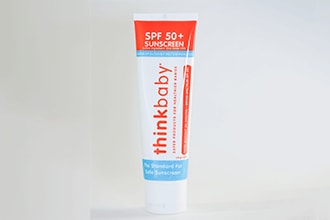
A cream formula that comes in a squeeze tube
Designed for easy, smooth application
Water-resistant up to 80 minutes
Customers who reviewed this product stated that it’s easy to apply to kids, stays on well and has a nice, light tropical scent. Others complained that it leaves a white cast on the skin.
7. Zinka Clear Zinc Oxide Face Sunscreen Stick SPF 50+
This sunscreen is a great choice for those who prefer a non-liquid formula with a high SPF. This stick sunscreen has one active ingredient: zinc oxide (20%). Inactive ingredients include aloe leaf juice, coconut oil and sunflower oil.
Zinka Clear Zinc Oxide Face Sunscreen Stick is:
A stick sunscreen that should not run into the eyes
A solid formula for easy, no-mess application
Packaged in a small, portable container
Customers who reviewed the product stated that it’s completely clear, goes on easily and offers good sun protection. However, others stated there’s a slightly oily feel to the product.
Sunscreen and burning eyes: FAQ
Want to know more? Here are answers to some common questions about sunscreen and your eyes:
Why does traditional sunscreen burn your eyes?
Traditional (chemical) sunscreens can burn your eyes because they use eye-irritating chemicals to block the sun. These chemicals may include:
Avobenzone
Homosalate
Octinoxate
Octisalate
Octocrylene
Oxybenzone
In contrast, physical sunscreens use titanium oxide and/or zinc oxide as active ingredients. These mineral compounds sit on top of the skin and physically block UV rays. These compounds make them less likely to run into your eyes and also less likely to irritate your eyes.
Keep in mind that physical sunscreens may still contain irritating inactive ingredients, so you may need to try a few brands before finding the right one for you.
Does sunscreen that doesn’t sting eyes work as well as traditional sunscreen?
If you choose the right product and apply it correctly, sunscreen that doesn’t sting your eyes (physical sunscreen) can work as well as traditional (chemical) sunscreen. Both chemical and physical sunscreens are effective, according to the American Academy of Dermatology Association (AAD). They recommend choosing any sunscreen that is:
Broad-spectrum
SPF 30 or higher
Water-resistant
The AAD also states that if you have sensitive skin, it may be best to opt for a physical sunscreen. The downsides of physical sunscreens: they may be harder to rub in and can give your skin a whitish tinge.
What happens if you get sunscreen in your eyes? Is it dangerous?
If you get sunscreen in your eyes, you may experience burning, redness and watery eyes. But sunscreen should not cause lasting damage to your eyes or harm to your vision.
To keep sunscreen out of your eyes, you should:
Avoid chemical and spray-on sunscreens
Consider using mineral sunscreens that are less runny and less irritating to your eyes and skin
Use hats and oversized sunglasses to protect the skin around your eyes from the sun
How do I stop my eyes from burning due to sunscreen?
Got sunscreen in your eyes? If you wear contact lenses, take them out right away. Then flush your eyes thoroughly with water or preservative-free lubricating eye drops . You can buy these over the counter and keep them on hand to use when your eyes feel dry or irritated. If you need more relief, put a cool compress over your eyes and rest.
Re-apply the drops every hour while the irritation persists. And if you wear contact lenses, wear your backup glasses for a few days to give your eyes a break.
When should you see an eye doctor?
In most cases, it’s not necessary to go to your eye doctor for sunscreen-irritated eyes. Sunscreen can cause a painful chemical burn to your eyes but it should not cause permanent damage. If your symptoms haven’t resolved within a few days of flushing your eyes clear, contact your eye doctor .
READ NEXT: UV radiation
